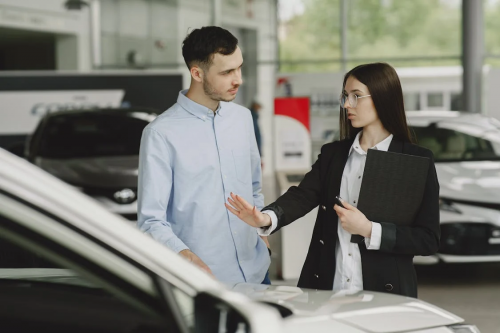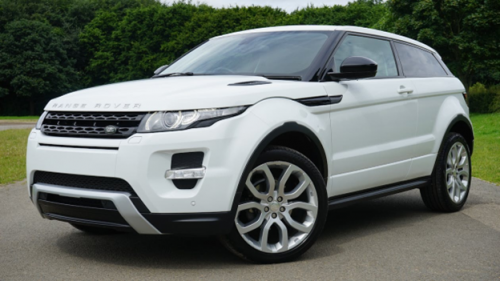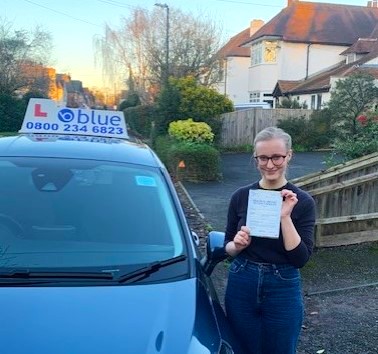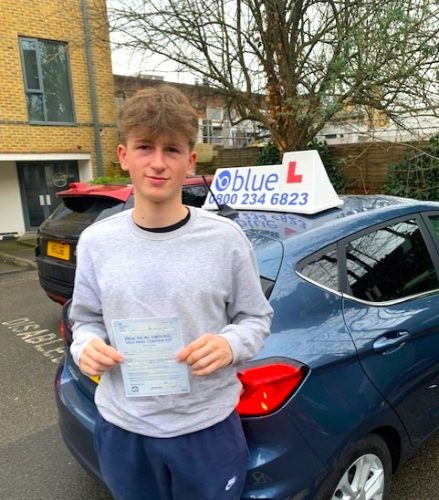
The Promise of the Self-Driving Car: Close To A Reality?
Posted in: Driving Tips, News.
The Promise of the Self-Driving Car: Close To A Reality?

Photo by Alex Powell from Pexels
It’s a question being asked more frequently – “when will self-driving cars become the dominant presence on streets everywhere?”
Automakers and tech companies alike continue to push the narrative that self-driving cars have indeed arrived. However, a better answer of when they actually will scale to consumers is some variation of “be patient.”
For better and for worse, it remains the best possible response in today’s tech-heavy, yet uncertain climate. Consider:
Back in 2015, outspoken Tesla CEO Elon Musk foresaw a self-driving car by 2018, with the claim:
“My guess for when we will have full autonomy is approximately three years. In some markets, regulators will be more forward-leaning than others, but in terms of when it will be technologically possible, it will be three years.”
That bold prediction has yet to materialize.
Google was also bullish on the fast rise and adoption of vehicle automation. While parent company Alphabet continues to advance their Waymo self-driving division beyond most competitors, it’s offset by the need for someone to sit in the driver’s seat.
In 2018, GM and Ford made bold declarations of putting cars into production that were free of steering wheels and pedals, by 2019 and 2021, respectively. Since that time, GM has backed off their original plan with Doug Parks, GM’s vice president of autonomous vehicles, citing regulation:
“Until we have exemptions [from the federal government], which we filed a petition for, and/or law changes, we probably wouldn’t go forward with Gen 4. But we think it’s really something we’ve got to talk about, we’ve got to work on.”
Ford, however, continues to push ahead towards their goal.
The hard truth though is that similar to many of history’s biggest advancements, there will be growing pains.
While that’s not as optimistic as one would hope, the reality is the sphere of self-driving technology, and the vehicles and they’re deployment, remains a work in progress.
The good news is that real-world testing and application of certain autonomous concepts are well past the infancy stage.
As technology matures and the idea of a car without a steering column or pedals become less radical, the day will arrive when autonomous, self-driving vehicles rule the road.
But where are we now?
Let’s look at how far we’ve come in self-driving tech, including where the industry leaders stand in their development. And, what’s holding us back from a fully autonomous future.
The Current State of Automotive Autonomy
Any ground-up discussion on self-driving cars begins with the question, “what does it mean for a car to be considered self-driving or fully autonomous?”
Autonomous standards defined by the Society of Automotive Engineers (SAE) and adopted by the U.S. National Highway Traffic Safety Administration’s (NHTSA) include six levels of vehicle automation.
Starting at Level 0, where there is no automation, the standards top out at Level 5 – full self-driving capabilities, no steering wheel, no pedals.
Most personal vehicles on the road today possess Level 1 or Level 2 automation – features such as adaptive cruise control, advanced assistance with acceleration and steering, automatic braking or lane guidance.
Many of these features are becoming standard on most classes of vehicle. So unless you’re tooling around in a car built prior to the early 1990s, chances are high that yours has some form of automation.
However, the leap from Level 2 to Level 3 automation is a big one. Then the holy grail, of course, is Level 5. But how close are manufacturers to this pinnacle of long-promised self-driving technology?
Who’s Leading the Revolution?
No fewer than 50 different companies are working to bring self-driving vehicles to a street near you. The diverse list of firms involved ranges from luxury automakers such as Mercedes-Benz and Audi to small tech startups responsible for creating key components of the driverless technology.
Others companies making a play include rideshare giants Lyft and Uber, the latter of which recently netted a $1 billion investment into their self-driving program. German manufacturer Continental who aims to revolutionize delivery and distribution by blending autonomous vehicles with delivery robots.
American legacy automakers GM and Ford have also made substantial investments towards mass-producing driverless cars. Even as they backed off their bold 2019 production goals, GM’s self-driving car program, Cruise, pulled in roughly $5 billion in outside investments.
Ford, for their part, have flown under the radar relative to others in the driverless segment. Even after admitting initial plans might have been too lofty, the automaker, in a partnership with startup Argo, are testing autonomous vehicles in Detroit, Miami, and Washington, D.C. They remain optimistic in hitting their 2021 production goal.
There are three companies, however, that collectively appear to be outpacing most others in the push to go driverless – Nvidia, Waymo, and Tesla.
Nvidia
In producing some of the top next-gen GPU and AI platforms for self-driving solutions, Nvidia has built an impressive partner roster which includes Audi, Mercedes-Benz, Toyota, and Volkswagen.
Earlier this year, the company announced that Volvo is adopting Nvidia’s AutoPilot solution to deliver Level 2+ vehicle automation. In all, over 300 companies use Nvidia in the production of self-driving vehicles and related technologies.
Waymo
When looking at actual miles driven by autonomous vehicles, no one comes remotely close to Alphabet (Google’s parent company) subsidiary Waymo. More significant, Waymo’s commercial self-driving taxi service, Waymo One, is set to expand beyond its Phoenix-based test group of 400 early riders.
With the opening of a new tech center in Mesa, Arizona, it positions the company to increase its fleet of driverless cars (with safety operator in the driver’s seat) and the group of early adopters.
Tesla
Perhaps most ambitious of all is Tesla, thanks in large part to its outspoken Principal and CEO, Elon Musk. The electric car company continues to push the boundaries of its current automated software, Tesla Autopilot, into a full-blown “self-driving suite.” Their commitment to doing so as early as next year runs counter to the measured approach adopted by the rest of the industry.
It reflects just how far ahead Tesla might be (or believe they are) from everyone else. Consider the company’s claims that the self-driving hardware is already in place, and bringing it to the public is now only a matter of getting the software right. In addition, Tesla is pursuing automation without the bulky equipment that accompanies other self-driving cars.
The concern is that the rush without reason or continued research might lead to accidents. Some worry a backlash would reinforce the belief that the world isn’t ready for fully autonomous cars. Or add to the laundry list of reasons why others maintain they are doomed to fail.
Expressing concern is Dieter Zetsche, former chairman at Daimler AG and head of Mercedes-Benz. Mr. Zetsche, according to the Washington Post, likens it to Boeing’s 737 Max air crashes:
“Even if autonomous cars are 10 times safer than those driven by humans, it takes one spectacular incident to make it much harder to win widespread acceptance.”
The Question of Safety
There is little doubt that eventually, autonomous cars will become ubiquitous on streets and highways throughout the country. To reach that point, there are still plenty of obstacles the self-driving segment must clear.
As evidenced by Mr. Zetsche, first among them is safety, or in more precise terms, the perception of safety.
Currently, perception lingers that autonomous technology is far from safe. Before achieving mass acceptance, people will require reassurance that an AI-driven car is more adept at keeping them safe than their own driving instincts and abilities.
Long term, the point of AI performing better at navigating the hazards of the road will prove accurate. Humans, after all, are flawed beings, and there’s little doubt when viewing it collectively, self-driving cars will make roads safer.
- They’ll eliminate drunk and distracted driving.
- AI controlling one car will better anticipate the actions of the AI in another vehicle, removing the unpredictability of two human drivers interacting.
- Travel will also become more efficient, thus reducing the prevalence of speeding or dangerous and aggressive drivers.Even with our shortcomings behind the wheel, recent accidents involving self-driving tech do give people pause. As the knowledge level of self-driving AI expands at an increasingly rapid pace, there is still a considerable learning curve to navigate.
Self Driving Cars Are Coming, Be Patient
So let’s reconsider our original question:
When will self-driving cars become the dominant presence on streets everywhere?
While lacking a consistent approach to solving, then advancing, the pursuit of a self-driving car, that so many have committed to finding an answer is a positive sign for the future of automated transportation.
For a timely comparison, the 50th Anniversary of the first Apollo moon landings has reignited interest it what it took to reach the lunar surface. Hundreds of companies and billions of dollars moving toward a singular goal. And it was accomplished in less than a decade.
The circumstances may be different, the interests more disparate than unified, it remains a worthwhile note of what’s possible with industry and innovation all seeking a common goal.
So while the answer to when we’ll see mass adoption of self-driving cars may still be some variation of “be patient,” the scope continues to narrow. Soon enough, being patient will give way to being a passenger.
Article reposted. Original of The Promise of the Self-Driving Car text.
Tags: The Promise of the Self-Driving Car Close To A Reality











